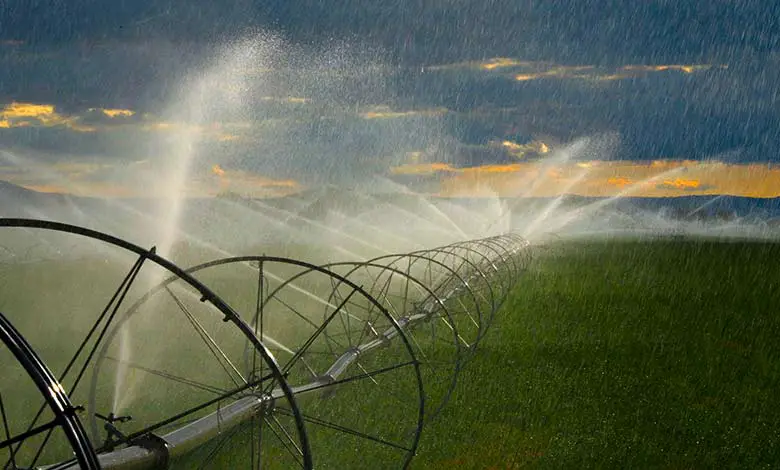
For the last 50 to 100 years, we’ve been using irrigation to increase the available food. You might get out of a problem for a year or ten, but it doesn’t solve the problem of needing more water to grow more food for this growing population. The real problem that the seawater greenhouse addresses are enabling the world to grow more food, unlike a conventional greenhouse, which you might think of as a hothouse.
The seawater greenhouse is the opposite. It’s a house designed to cool, humidify and create a climate suited to temperate-type crops in hot arid regions. Africa is the world’s center for water insecurity, making it the world’s center for food insecurity. Also, there’s no need for it at all. It is economically viable, practical, and not very difficult to use seawater to grow luscious, temperate crops. So, it is exciting to work on solutions to those problems.
Can seawater be used for irrigation? (Scientific explanation)
The most common way to make seawater usable for irrigation is through desalination, which involves removing salt and other impurities from the water. Desalination processes like reverse osmosis or distillation can effectively remove the salt, producing fresh water that can be used for irrigation.
Desalination is an energy-intensive process and can be expensive to implement and maintain. The infrastructure required for desalination plants and the energy required to run them can make desalinated water more costly than other water sources.
According to the UN’s Food and Agriculture Organisation, salinization reduces the world’s irrigated lands by 1% to 2% annually. But that doesn’t faze Dutch farmer Mark Von Rosenberg, who has used saline water to kill some plants to identify which ones can thrive. He put a lot of plants in the field and put them in fresh water and seawater. Then he sees which variety is surviving and which is dying.
Working with scientists from the Free University of Amsterdam, Van Solberg, and his team divided a farm into eight plots covered with a network of irrigation pipes. Separate pipes bring fresh seawater to a distribution center where a computer-controlled system mixes irrigation water with eight degrees of salinity. Then it goes to the fields and the dripping irrigation works.
Numerous sensors continuously control soil, salinity, and moisture. Van Rensburg says they could harvest vegetables from most test plots, although they were smaller than average. Also, he said, they contain more sugar and salt, so they taste better. It’s a miracle! The farm managed to grow carrots, cabbage, onions, and beetroot, but potatoes proved to be the most tolerant to saline water.
How can sea water be used for irrigation? (Saltwater farming process)
Nowadays, agriculture faces one of the gravest snags: soil salinization. This is caused by the salts that enter into sedimentation inside salt capillaries. As a result, soil capacity falls drastically. Salt concentration in plants and capillaries and insufficient intake of nutrients will ultimately lead to the demise of crops.
We can offer a magnetic irrigation water treatment to solve this elimination problem. This method is based on changes in natural water’s physical and chemical parameters. It can better infiltrate and dissolve the water’s capacity, speed up salt removal from desalinated soil, and facilitate the absorption of nutrients and fertilizers for crops during a vegetation period.

Magnetized water gains the power of three or four times as much as years of water to bring salt out of the soil. Oxygen concentration increases by 10%. It is noteworthy that after the water has been dry magnets, the contents of plant nutrients spiral upwards. The problem of irrigating plants with salty water is closely related to soil desalination.
What will happen if the capillaries can make crystals of salts and other chemical elements or suspensions pass straight through? Let us imagine how salt capillaries and crystals may look. Such sizeable crystals will block capillaries and sour the capillaries of both plants and soil.
Much smaller crystals can readily travel through the soil and plants’ capillaries. Hence it follows that it is necessary to split up crystals. It is the job that the systems can handle because the application source is no longer dangerous.
Although the contents in the water do not scale down, the plant will select from the water whatever it needs for growth. Use fewer salt crystals, and other components will go down the drain. Salt capillaries will also let the salt crystals and components access a general mobile water circulation system.
Last words
With drip irrigation, Putting the dripper line under every row in a salt problem is essential. Because when you irrigate, you’re trying to push the salts away from the root zone so that your roots can grow into the cleanest water you can give them. Also, salt will precipitate where the dry soil meets the wet soil.
We install new drip systems every year and will continue this trend. The pivot is getting 50% more water than the drip, and the drip is twice as good cotton. Farmers will take this deal; we hope it will last for generations with the drip. So, the researchers are still working on it to make it more efficient.
Read more about the Sea:
Why Is The Sea Water Salty Taste?
How Long Can You Survive Drinking Sea Water?
How Do Ocean Currents Affect Climate?
References:
Monica Nicks, Consider The Salt-Tolerant Potato. In: Modern Farmer.
Government of The Netherlands. Dutch saline agricultural knowledge brings breakthroughs in food security.
Salt Farm Texel, Crop salt tolerance brochure.
L. A. Richards, Editor, 1954, Diagnosis and Improvement of saline and alkali soil, Agriculture Handbook, USDA.
Uwe Schleiff, Research for crop salt tolerance under brackish irrigation.
Crop salt tolerance-current assessment. Journal of the Irrigation and Drainage Division, American Society of Civil Engineers.
